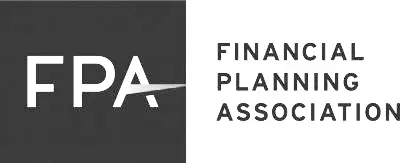Are you trying to save for a child going to college? If so, keep in mind the cost of college continues to increase faster than inflation with the largest increases at public universities:

Percentage cumulative change over the last 10 years for tuition and fees (source):
- Public Four-Year College = 104%
- Private Nonprofit Four-Year College = 60%
- Inflation = 27.8%
Tuition rates are expected to continue to rise faster than inflation due to less money from the cash strapped states and increased college operating costs.
Before you jump to put all your money in college savings, please remember parents should focus first on their own retirement savings through a company retirement plan (e.g. 401k) and a Roth IRA before funding a college savings vehicle.
Fast Track
One relatively new option is certain colleges are starting to offer college degrees in three years instead of four for highly motivated students. This is one way to potentially reduce college costs by 25% and a trend to watch for the future.
To help pay for college two commonly overlooked options are financial aid and tax credits. Below is a summary of the different sources of financial aid from the College Board:

Many parents believe they will not qualify for financial aid, but the definition of aid varies by college. For example, Yale’s definition of need is expansive, extending to families who earn as much as $200k per year.
To qualify for aid, you’ll need to complete the Free Application for Federal Student Aid (FAFSA). This application gives you access to these types of aid:
- Scholarships and grants: money you don’t have to pay back
- Work-study jobs: paid, part-time work that’s generally on campus
- Loans: money you need to pay back, usually after you graduate
No Reason to Not Apply
What many parents don’t realize is there is no cost (except your time) for applying for financial aid. Whether or not you receive financial aid is based on a number of factors including, but not limited to:
- Parent’s income/assets
- Kids in college
- Kids in house
- Age of oldest parent
Your historical assets/income levels for aid calculations start in January of your child’s junior year of high school and the application should be completed first thing in January of your child’s senior year (everything can be completed online). A supplemental application may be necessary based on your child’s selected college, but the federal site is a good place to start.
The outcome of the FASFA application will be your expected family contribution (EFC) as colleges use the EFC to guide their decision about how much need-based financial aid to award a student. Therefore, don’t assume a high priced private school is not possible as they may provide a better financial aid package. Currently, public schools meet 40-65% of need (50% gift/50% loan) while private schools typically meet 70-80% of need (85% gift/15% loans). Therefore, you need to look at your actual cost of attending the school after the aid and not the initial sticker price.
The Most Generous Tax Break
In addition to financial aid, probably one of the most generous tax breaks in the entire tax code is the American Opportunity Tax Credit (AOTC). The AOTC is a $2,500 tax credit available four times per student for families earning less than $160k for married filing jointly ($80k for single). Since it is a credit and not a deduction this a dollar for dollar reduction in your tax payment.
One important note is you can’t use money from your 529 and take the credit. For example, if you expect college costs of $10k next year you should use $6k from your 529 plan and the other $4k out of pocket to get the full tax credit (first $2k is dollar for dollar and next $2k get a 25% credit). This is another reason not to overfund your 529 plan, along with the tax penalties for withdrawals on earnings not associated with education.
Putting A Plan In Place
The rising cost of college creates challenges for many families, but don’t overlook the potential benefits of financial aid and tax credits.
These benefits along with a regularly funded 529 plan will help mitigate the risk of increasing college costs.
For further questions on this topic please consult with your financial planner.





